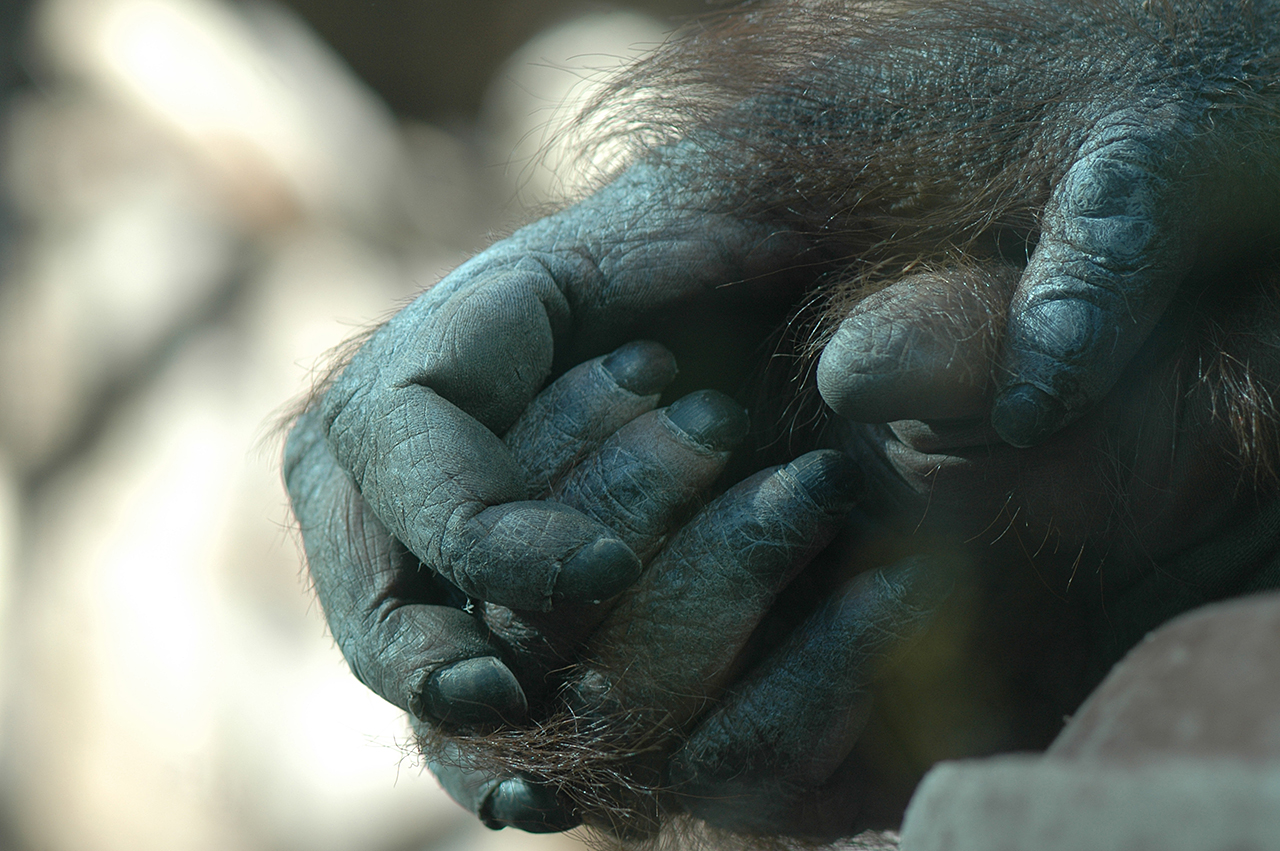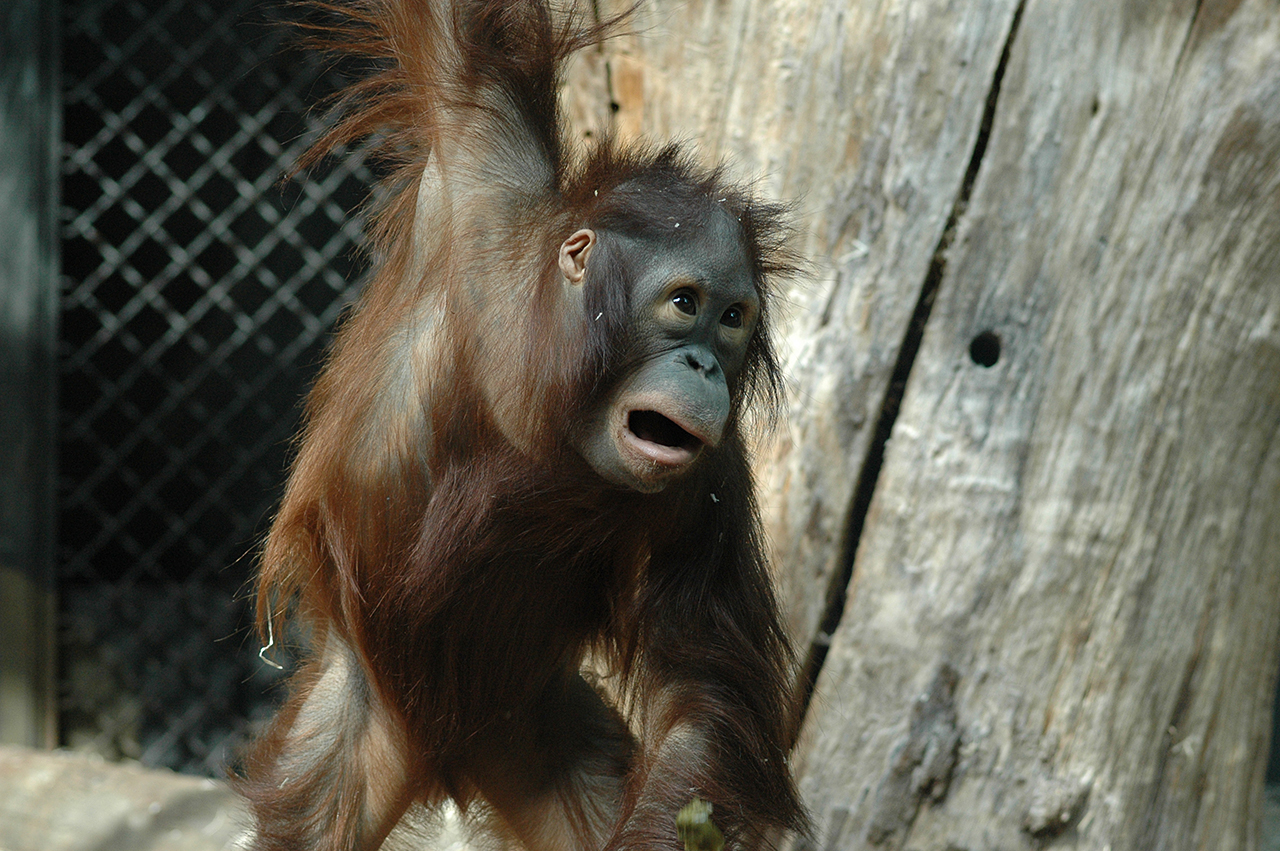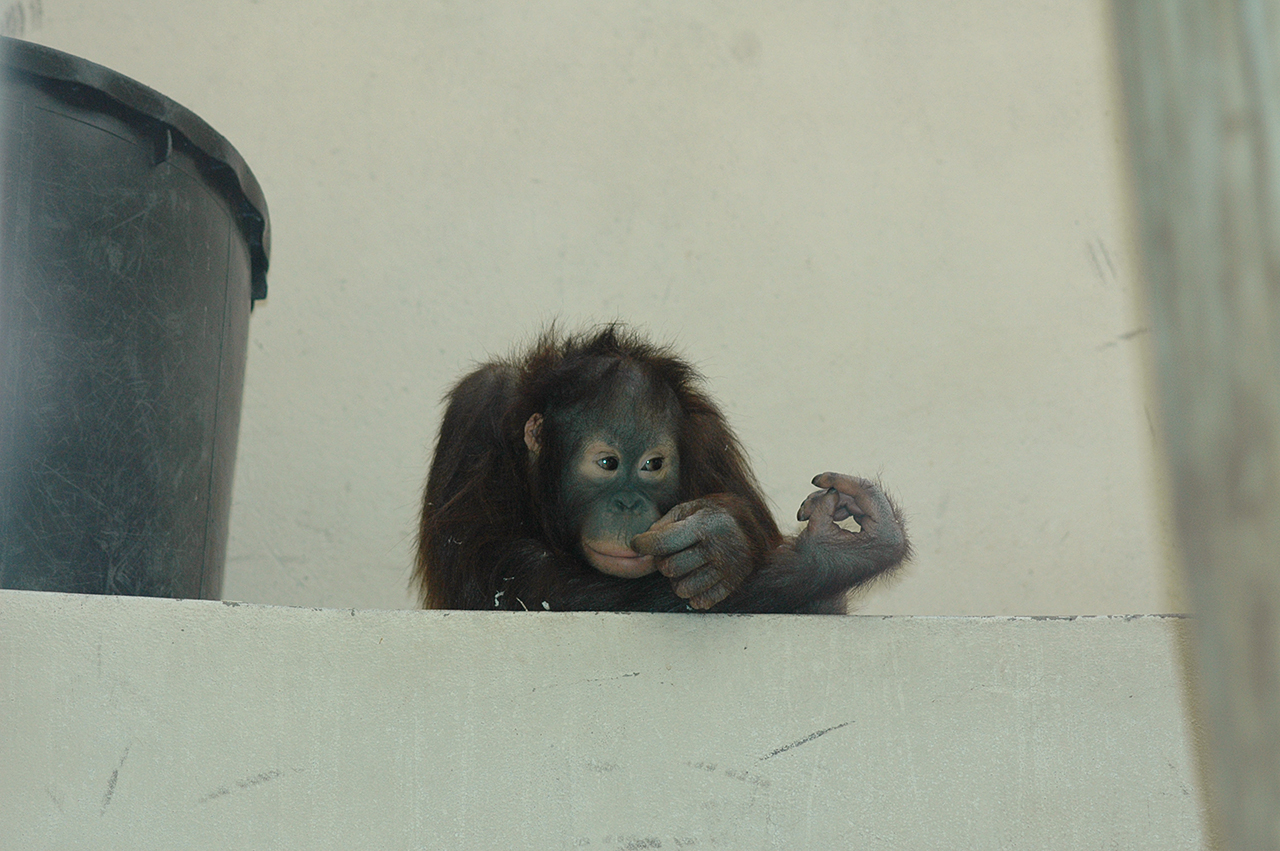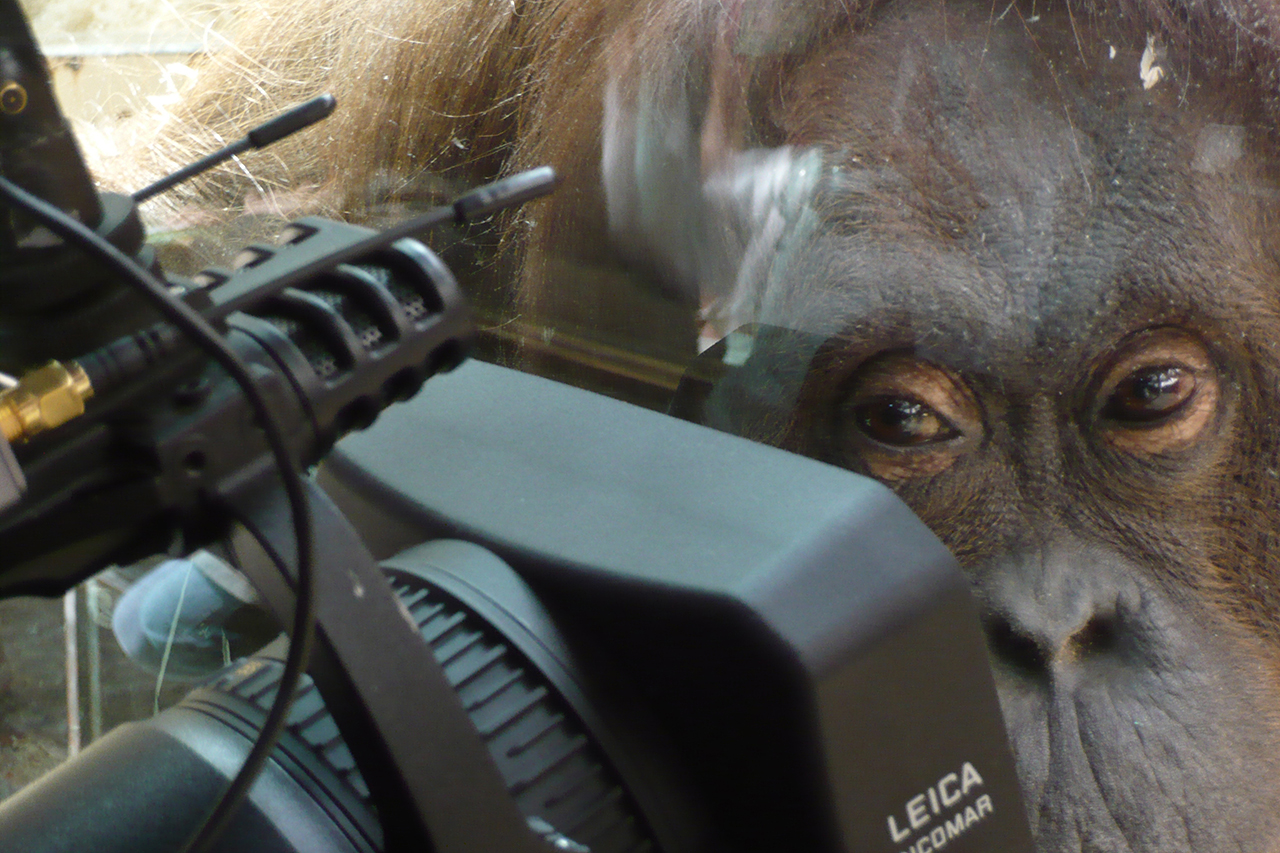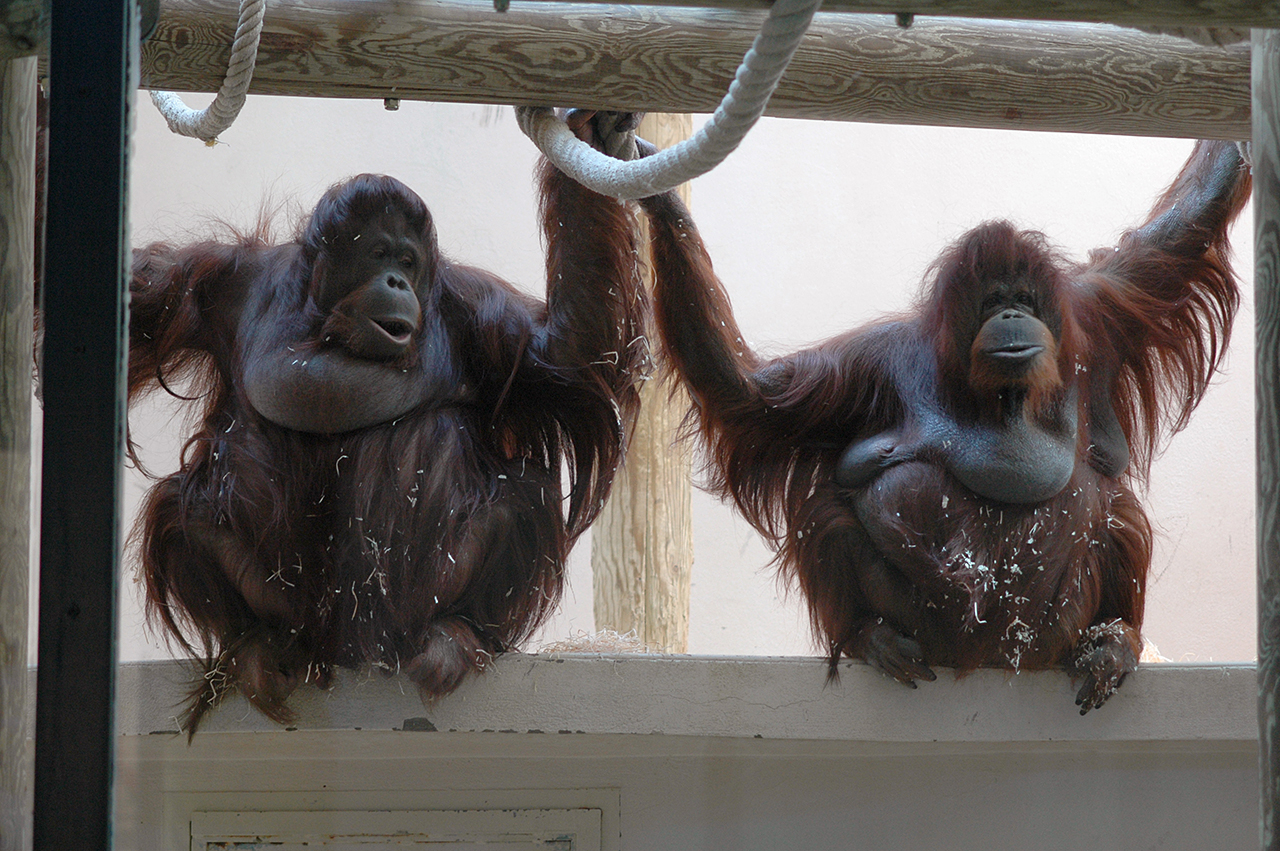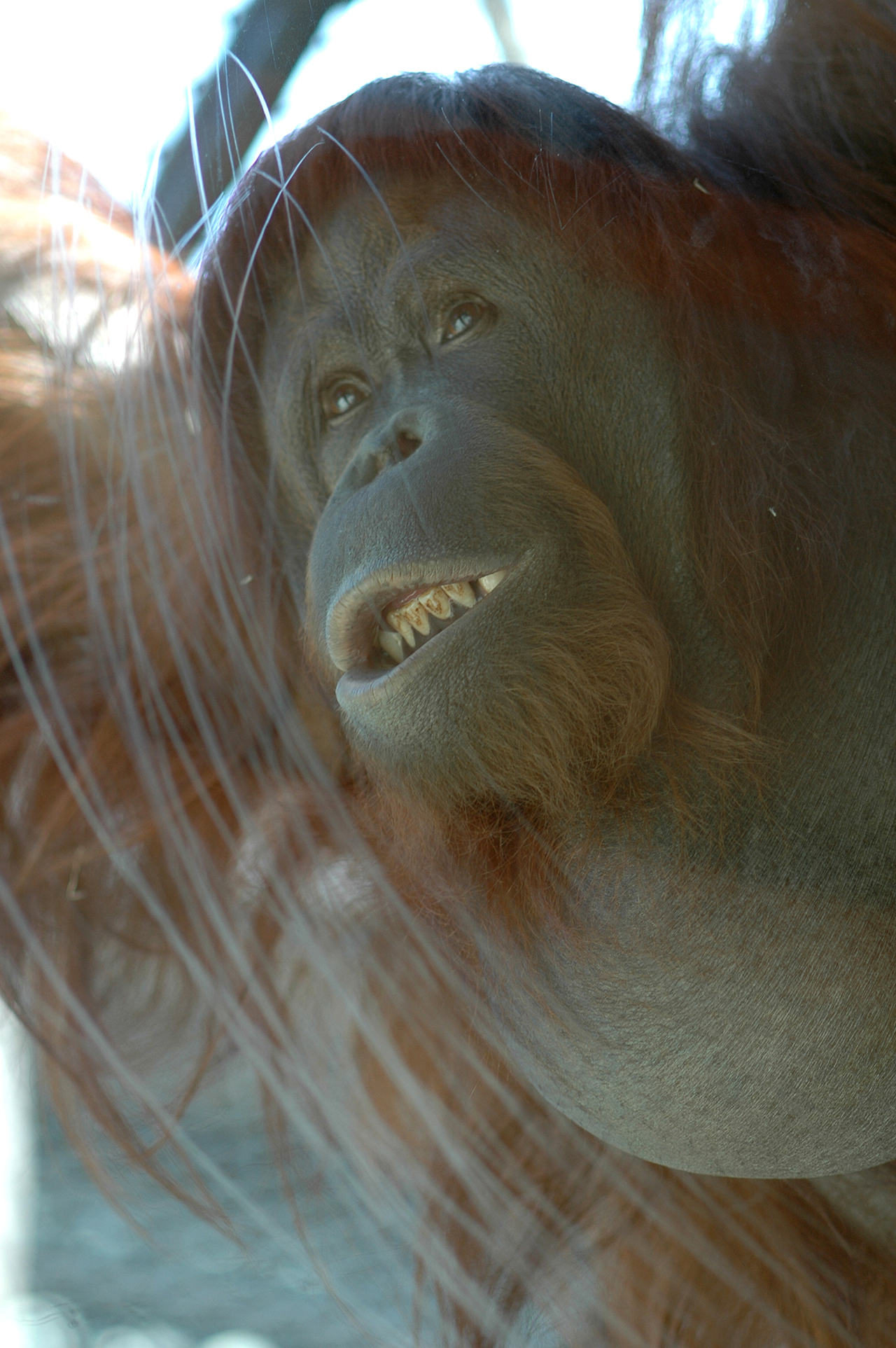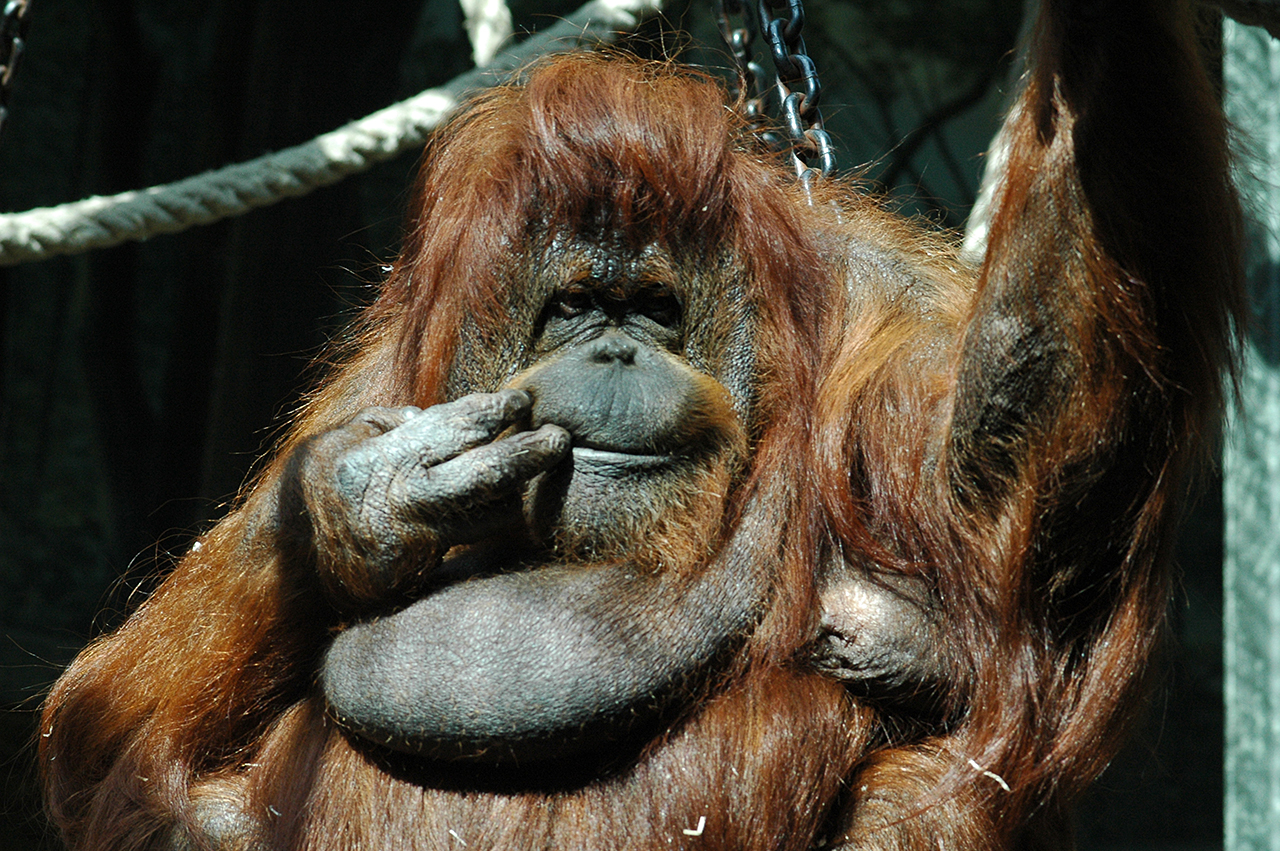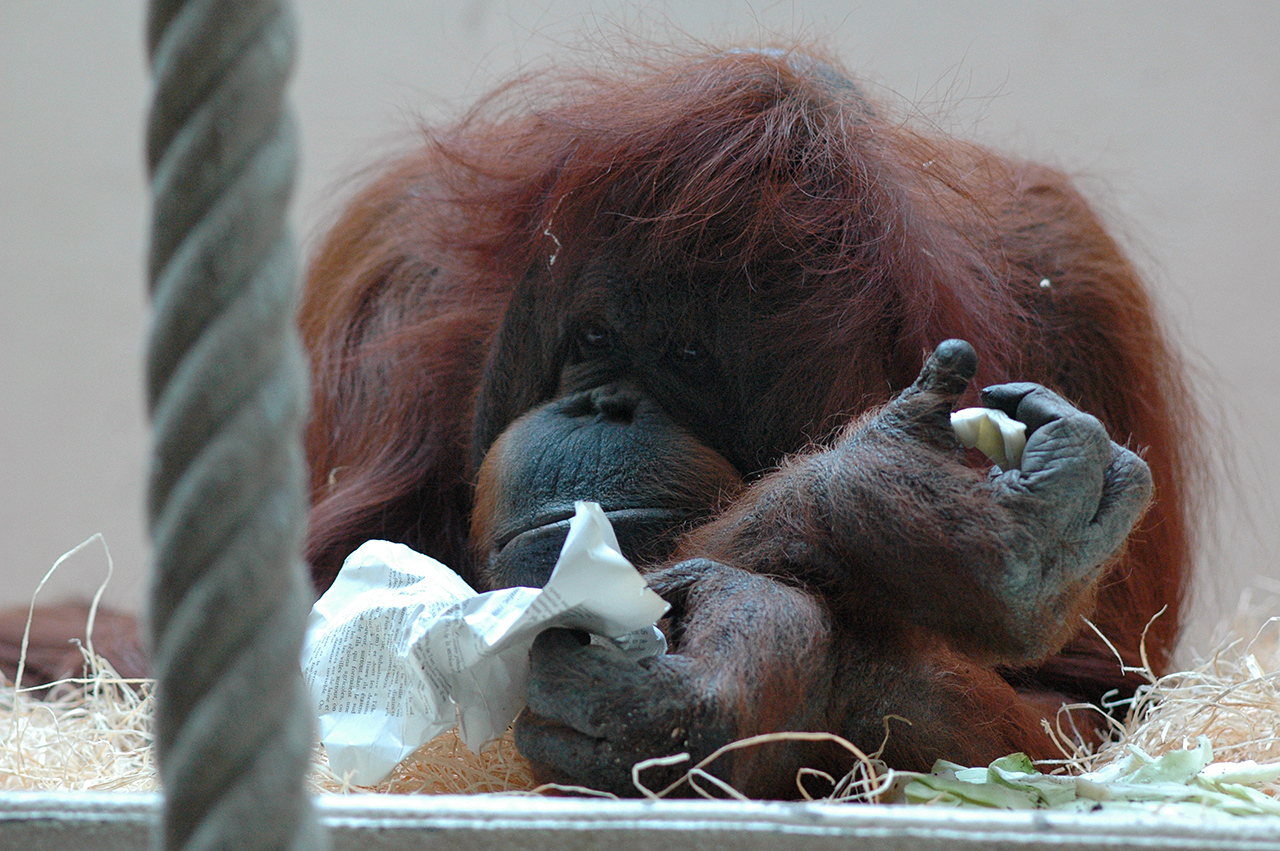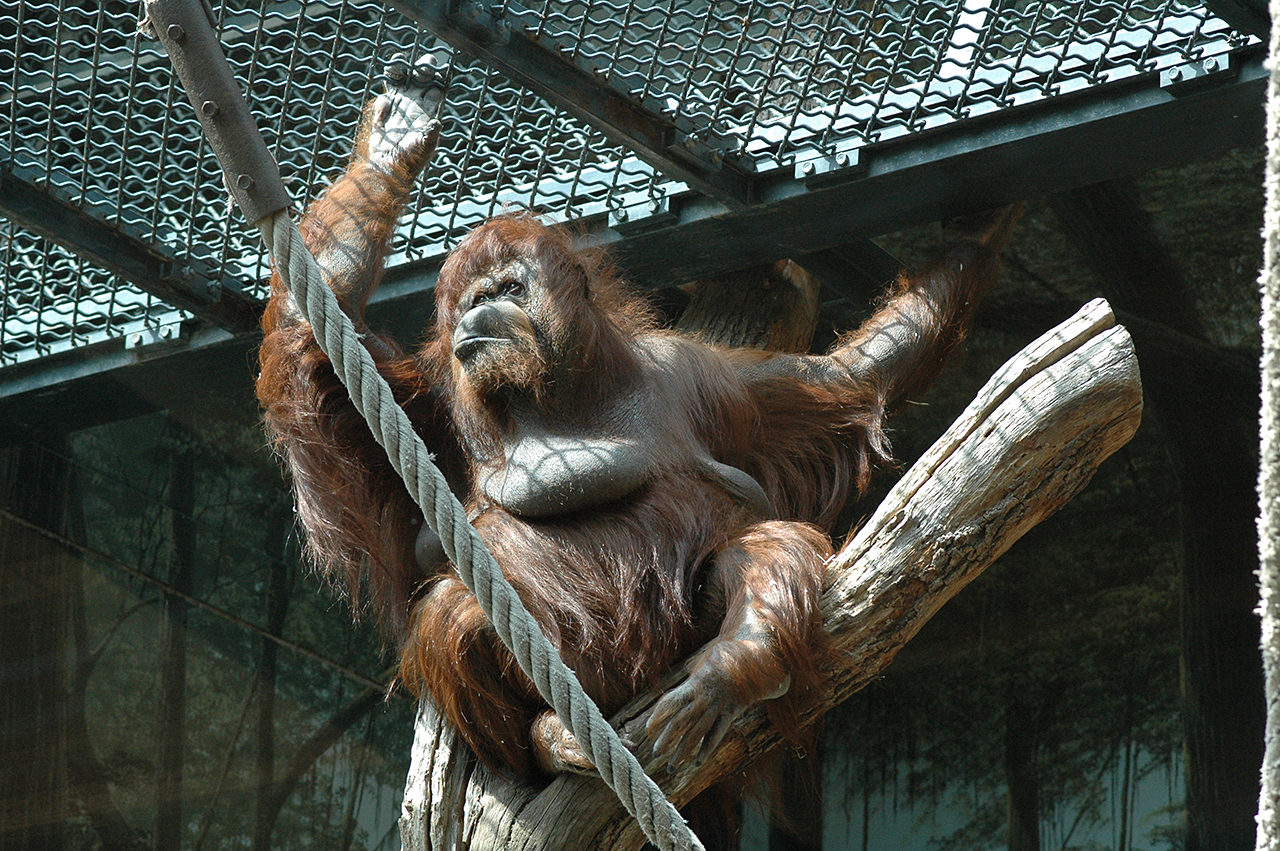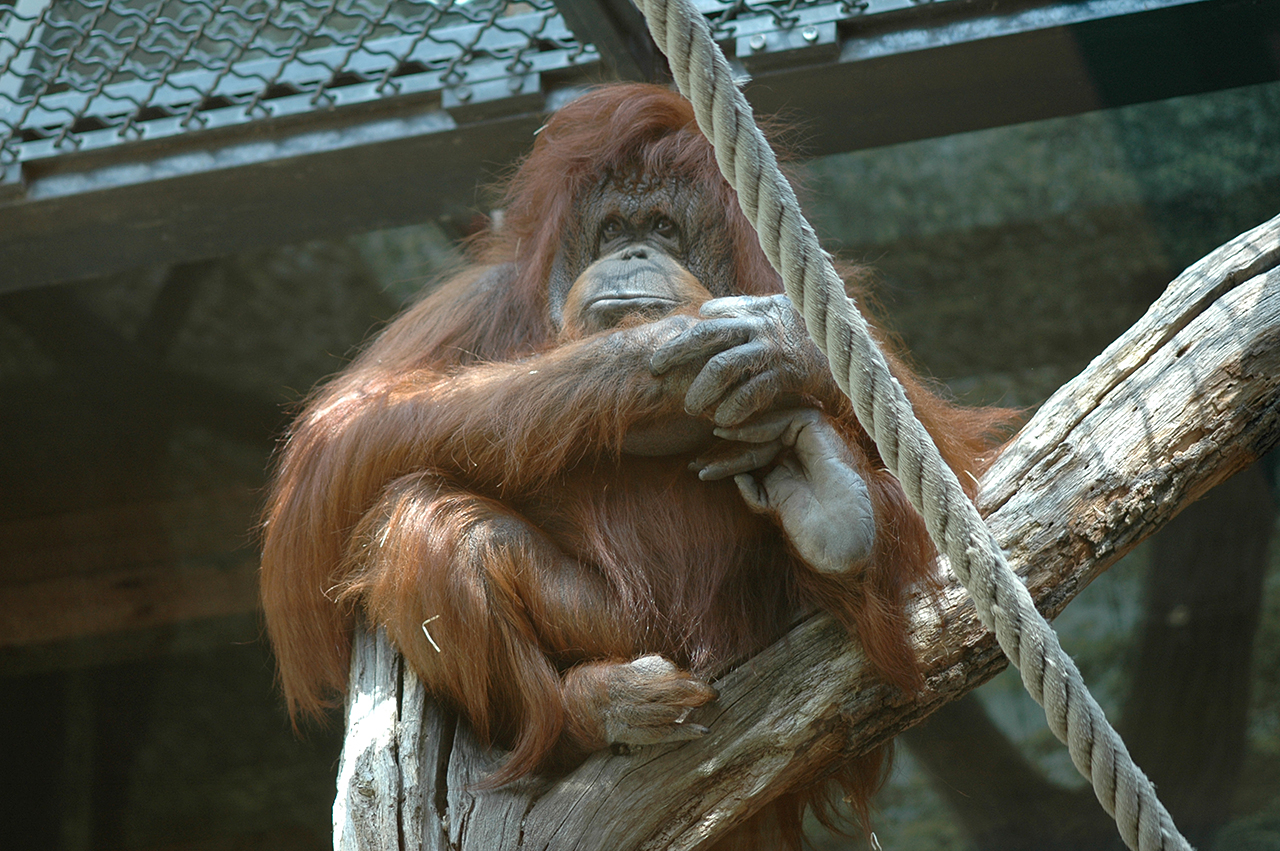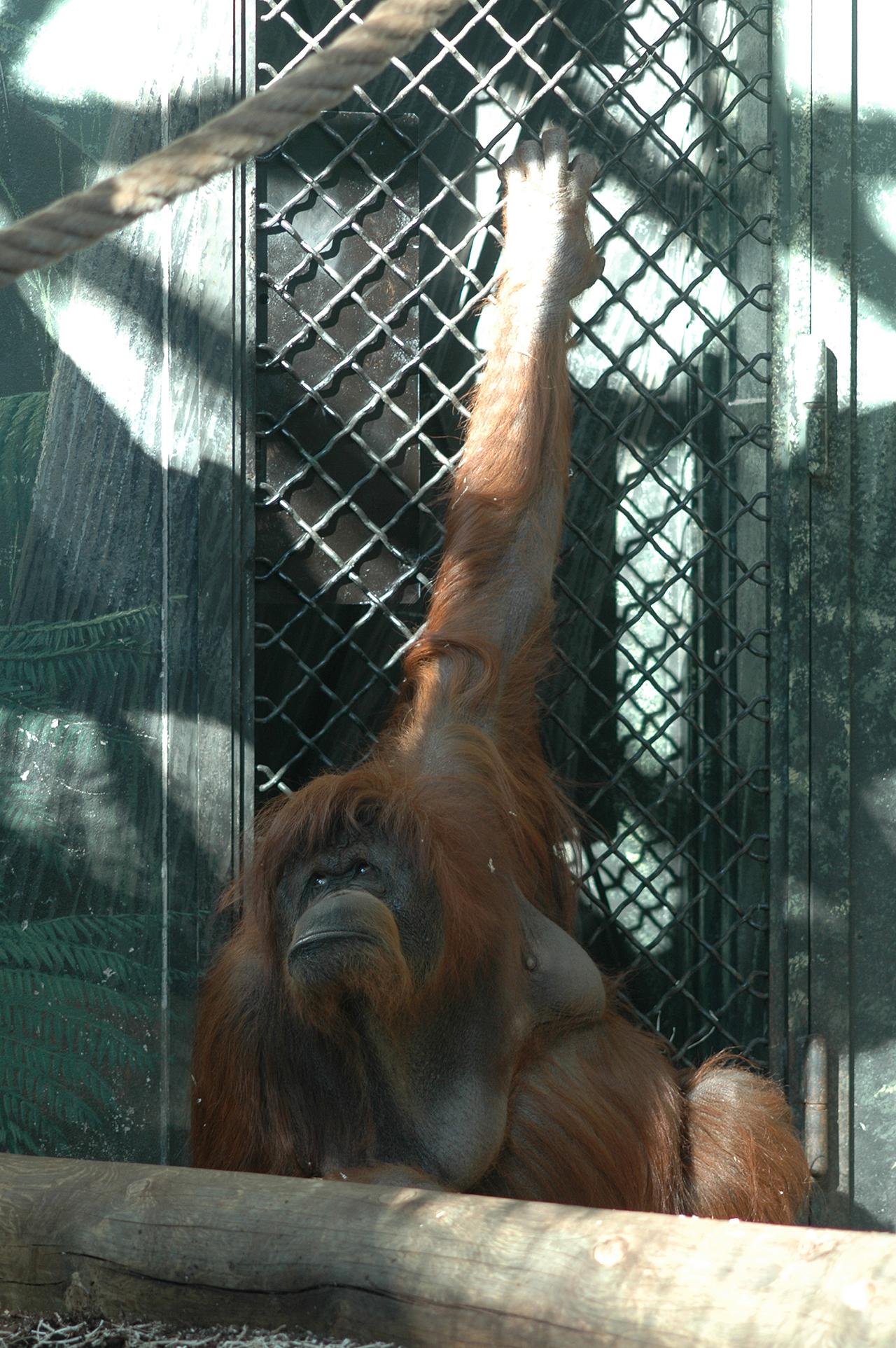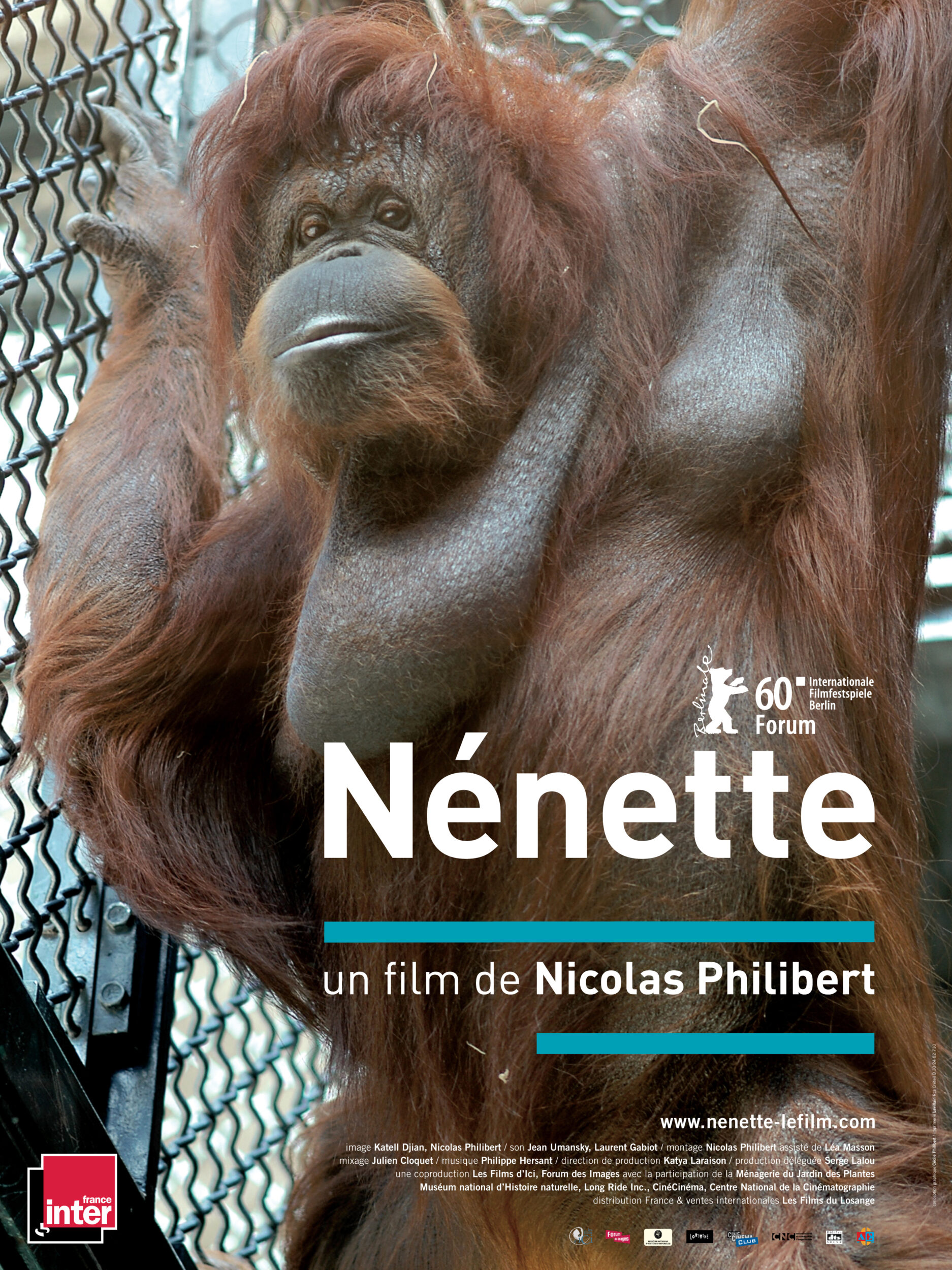Born in 1969 in the forests of Borneo, Nénette has just turned 40. It is rare for an orang-utan to reach such a venerable age! A resident of the menagerie at the Jardin des Plantes in Paris since 1972, she spent more time there than any member of staff. The unrivalled star of the place, she sees hundreds of visitors file past her cage each day.
And, of course, each one of them has comments to make…
2010 / 70 mins / 35 mm colour / 1,85 / DTS SR
Photography Katell Djian, Nicolas Philibert • Sound Jean Umansky, Laurent Gabiot • Editing Nicolas Philibert, with the assistance of Léa Masson • Mix Julien Cloquet • Colour grading Eric Salleron • Production manager Katya Laraison • Post-production co-ordinator Sophie Vermersch • Original score Philippe Hersant, performed on the basson by Pascal Gallois • The traditional song “Dobri dien romale” is performed by Eric Slabiak and Franck Anastasio • The extract from Buffon’s “Natural History” is read by Valéry Gaillard • Co-produced by Les Films d’Ici/Serge Lalou, with the assistance of Laura Briand – Forum des images/Alain Esmery, with the assistance of Corinne Beal • With the participation of the menagerie of the Jardin des Plantes/Muséum national d’Histoire naturelle and CinéCinéma, Long Ride Inc., Centre National de la Cinématographie • Colour grading Forum des images / Avidia • Mix Archipel Productions • Optical transfer Ciné Stéréo • Subtitling CMC Paris • Laboratoires Eclair • French distribution & world sales Les Films du Losange • Release certificate n° 124 741 • © Les Films d’Ici, Forum des images, 2010.
With the voices of Abel and Lucie Morin, Agnès Laurent, Georges Peltier, Gaya Jiji, Eric Slabiak, Muriel Combeau, Diego Feduzi, Ludovico Lanni, Christelle Hano, Charlotte Uzu, Agathe Berman, Judit Kele, Zhang Xuequin, Linda De Zitter, Maria Charlès, Marianne and Mikhael Lalou, Marie-Claude Bomsel, Jean-François Sonnet, Gérard Dousseau, Catherine Hébert, Pierre Meunier, and of numerous anonymous visitors.
Official selection Berlinale 2010 (Forum) Berlinale 2010 • Best Director, documentary section, RiverRun International Film Festival (USA) 2011 • Grand Prize « Cinéma Vérité » Iran International Documentary Film Festival, Téhéran 2011.
French theatrical release : March 31, 2010
Distribution & world sales : Les Films du Losange
www.filmsdulosange.fr
This project came about at the end of 2008. One day, I went to visit the menagerie at the Jardin des Plantes. I hadn’t set foot there for years. On entering the “ape house”, I stopped dead in front of the orang-utans’ cage. A few visitors, laughing, were commenting on their every act and gesture. On her ledge, Nénette seemed to be miles away but, on taking a closer look at her, I realized that in fact she wasn’t missing one bit of the show that we were unwittingly providing… The idea for the film came to me at that point. In my mind, it would be a short film running fifteen or twenty minutes at the most but, as soon as I started shooting, I could tell that the face-to-face set-up was going to allow me to go beyond the initially planned running time. This was confirmed during editing. From that moment on, the film followed its own development without me needing to force things.
I wanted to film Nénette face-on, through the glass of her cage, the way visitors see her. Seize those troubling moments that seem suspended in time when she looks back at us. Of course, I also filmed the other three, Tübo, Théodora and Tamü: they share the same cage but, in the film, I haven’t given them the same place. The priority goes to Nénette. And yet, at first sight, she is the most discreet, the one you notice the least. She is often in the background, half-buried under the straw of her nest where she takes very long naps. She is probably saving her strength… given her age! She is also the only one not born in captivity but in her natural environment, in Borneo. I don’t know if that is what makes her more distant but she rarely approaches, unlike the other three who do not hesitate to come and press against the glass. Perhaps that’s what I liked. This distant presence, tinged with indifference, that gives her a sort of aura, a sort of sovereignty! A way of charming without trying to charm; of looking at the visitor without ever asking for anything in return and of flinging his so-called superiority and voyeurism back in his face.
600,000 people file past her cage each year, take her photo, film her, comment on the sight. They laugh, exclaim, sympathize, pity, admire her skill, her agility, the sheen of her fur; they philosophize, compare themselves to her, explain to their children; by reading the signs, they discover the extent of the threat facing the species, the massive deforestation, poaching… There are visitors who come every week, as if coming to see an old cousin; those who are there for the first time and who remain rooted to the spot; those who jeer, grunt, gesticulate, imitate her, ape her or pose endless questions about the pouch that orang-utans have under their chin. Seven days a week, winter and summer. For 37 years.
The film is based on the divergence between image and sound, meaning that we see the animals without ever hearing them and hear the humans without ever seeing them. There is no reverse angle. No cutaway shot. The soundtrack blends several kinds of words: the spontaneous comments of the visitors – families, couples, foreign tourists, a gang of adolescents, single visitors, students from an art school and their teacher, etc… But I have also recorded the keepers, especially the older ones: they saw Nénette grow and know her story. Finally, I asked a few friends from different backgrounds to come along and I recorded their reactions. Among them, Erik Slabiac and Franck Anastasio from the group Les Yeux noirs came to sing a gypsy tune. Valéry Gaillard, who was my assistant for some years before making his own films, came to read some pages by Buffon. Linda De Zitter, a psychoanalyst, chose Flemish, her mother tongue, to make a few remarks; and the comedian, Pierre Meunier came up with the long, totally improvised monologue at the end of the film…
Behind the glass, Nénette is a mirror. A screen for our projections. We attribute all kinds of feelings, intentions and even thoughts to her. In talking about her, we talk about ourselves. In looking at her, we include ourselves in the picture. Just as Flaubert declared, “I am Madame Bovary!”, so I could say, “I am Nénette.” She is you. She is us. And yet we shall never know what she thinks, or even if she thinks. The mystery remains. Deep down, Nénette is the perfect confidante: she keeps all secrets.
This is a film on the gaze, on representation. A metaphor for the cinema, in particular for the documentary, as capturing and as capture; after all, filming others is always a way of imprisoning them, of enclosing them in a frame, of freezing them in space and time.
Nicolas Philibert

